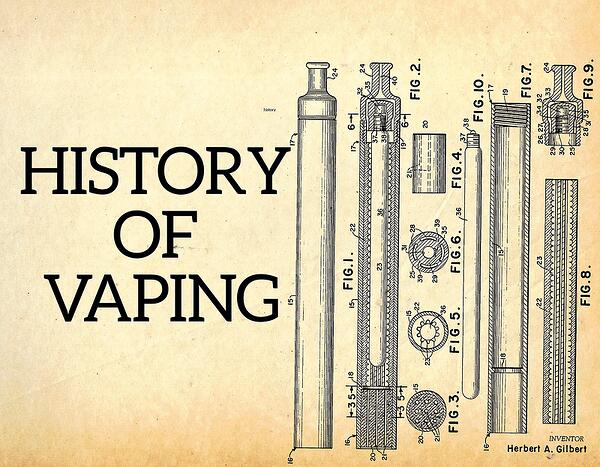Vaping Aromas and Food Aromas: Are They Really the Same?
Introduction
The world of vaping has grown exponentially over the past decade, with a vast array of flavors available to users. These flavors, or "aromas," often mirror those found in foods, leading to a common question: Are vaping aromas the same as food aromas? This article delves into the similarities and differences between vaping and food aromas, exploring their chemical compositions, safety profiles, and regulatory standards.
Understanding Aromas
What Are Aromas?
Aromas are compounds that give foods, drinks, and other substances their distinct smells and flavors. They are often complex mixtures of natural and synthetic compounds that interact with our sensory receptors to produce the experience of taste and smell.
Aromas in Food
In food, aromas play a crucial role in enhancing flavor and overall eating experience. These aromas can be derived from natural sources, such as fruits, spices, and herbs, or they can be created synthetically in laboratories. Natural flavors are extracted from actual food sources, while synthetic flavors are chemically manufactured to replicate natural aromas.
Aromas in Vaping
Similarly, in vaping, aromas are added to e-liquids to create various flavors that mimic those found in foods, beverages, and even desserts. These e-liquids are typically composed of propylene glycol (PG), vegetable glycerin (VG), nicotine (optional), and flavorings.
Chemical Composition
Common Compounds
Both food and vaping aromas often share common compounds. For example, ethyl maltol is a flavoring agent found in both foods and e-liquids, providing a sweet, caramel-like aroma. Vanillin, responsible for the taste of vanilla, is another compound used in both industries.
Source of Compounds
While the compounds may be the same, the sources can differ. Food aromas are primarily derived from natural extracts, although synthetic versions are also common. Vaping aromas, on the other hand, often rely more heavily on synthetic flavorings due to the need for consistency and stability in the e-liquid formulations.
Safety and Health Concerns
Consumption vs. Inhalation
One of the main differences between food and vaping aromas lies in the method of consumption. Food aromas are ingested, while vaping aromas are inhaled. This distinction is crucial because the human body processes inhaled substances differently from those that are ingested.
Regulatory Standards
Food Aromas: Regulated by food safety authorities like the FDA (Food and Drug Administration) in the United States, which ensures that flavors used in food are safe for consumption. These regulations are based on the understanding that the compounds will pass through the digestive system.
https://boombvaping.com/ar...
Introduction
The world of vaping has grown exponentially over the past decade, with a vast array of flavors available to users. These flavors, or "aromas," often mirror those found in foods, leading to a common question: Are vaping aromas the same as food aromas? This article delves into the similarities and differences between vaping and food aromas, exploring their chemical compositions, safety profiles, and regulatory standards.
Understanding Aromas
What Are Aromas?
Aromas are compounds that give foods, drinks, and other substances their distinct smells and flavors. They are often complex mixtures of natural and synthetic compounds that interact with our sensory receptors to produce the experience of taste and smell.
Aromas in Food
In food, aromas play a crucial role in enhancing flavor and overall eating experience. These aromas can be derived from natural sources, such as fruits, spices, and herbs, or they can be created synthetically in laboratories. Natural flavors are extracted from actual food sources, while synthetic flavors are chemically manufactured to replicate natural aromas.
Aromas in Vaping
Similarly, in vaping, aromas are added to e-liquids to create various flavors that mimic those found in foods, beverages, and even desserts. These e-liquids are typically composed of propylene glycol (PG), vegetable glycerin (VG), nicotine (optional), and flavorings.
Chemical Composition
Common Compounds
Both food and vaping aromas often share common compounds. For example, ethyl maltol is a flavoring agent found in both foods and e-liquids, providing a sweet, caramel-like aroma. Vanillin, responsible for the taste of vanilla, is another compound used in both industries.
Source of Compounds
While the compounds may be the same, the sources can differ. Food aromas are primarily derived from natural extracts, although synthetic versions are also common. Vaping aromas, on the other hand, often rely more heavily on synthetic flavorings due to the need for consistency and stability in the e-liquid formulations.
Safety and Health Concerns
Consumption vs. Inhalation
One of the main differences between food and vaping aromas lies in the method of consumption. Food aromas are ingested, while vaping aromas are inhaled. This distinction is crucial because the human body processes inhaled substances differently from those that are ingested.
Regulatory Standards
Food Aromas: Regulated by food safety authorities like the FDA (Food and Drug Administration) in the United States, which ensures that flavors used in food are safe for consumption. These regulations are based on the understanding that the compounds will pass through the digestive system.
https://boombvaping.com/ar...

История на вейпинга: Новата ера и началото на вейпинга
Вейпингът, какъвто го познаваме днес, се превърна в повсеместна част от съвременния живот, предлагаща алтернатива на традиционното пушене. Но откъде започн
https://boombvaping.com/article/istoriya-na-veypinga-novata-era-i-nachaloto-na-veypinga
05:21 AM - Jun 22, 2024 (UTC)
